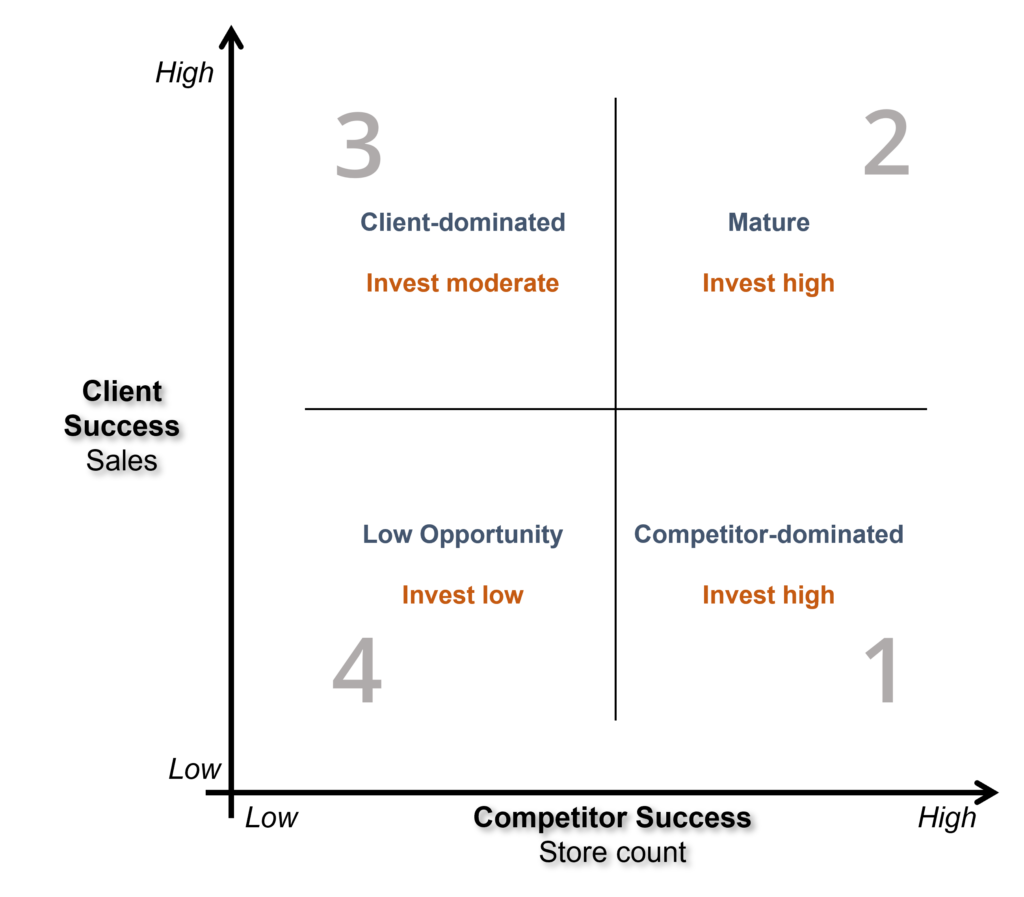Like Warren Buffett wouldn’t invest in just one stock, we wouldn’t tell our retail clients to invest in just one city. In fact, we believe that geographic diversification is critical to success and that geospatial investments should be considered through the lens of the 2×2 matrix, shown below.

Quadrant 1: Areas where your competitors are dominant and you (our client) is not. Invest high as these are markets of high potential.
Quadrant 2: Areas where both you and your competitors are strong. Invest high, as these are markets where you need to maintain position.
Quadrant 3: Areas where you are strong compared to your competitors. Invest moderate as these are client-dominated markets even though opportunity is not as large as those in quadrants 1 and 2.
Quadrant 4: Areas where you and your competitors are weak, which indicates most likely that these are small markets. Invest low, unless your strategy is specifically focused on winning small markets.
You can interact with the dashboard below:
In the example above, we would say the WP client should be investing heavily in Houston, Miami, Washington DC, and Dallas (Quadrant 1), where their competitors are very strong and they are not. They should also invest heavily in Chicago, LA, and NY (Quadrant 2), where they need to maintain their strong position, relative to their competitors. Moderate investment should be made in Quadrant 3 (Pittsburgh and others), where the client clearly outpaces their competitors, purely to maintain their position.
